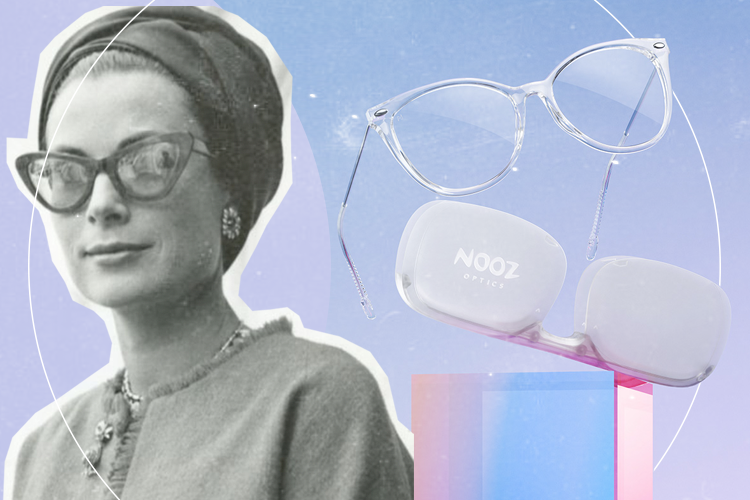
Guides
Screens
The blue light's effects
Discover the risks of blue light
12/16/2020 | Andréas
The advent of digital has increased the time we spend in front of our screens, whether it is daily contact with family and friends, professional prerogatives, or even evening habits (television or video games for example). However, screens broadcast a wavelength which are ultimately dangerous for the retina. But what are the effects of blue light? In what way is the eye ineffective in treating blue light? What are the long-term risks of blue light? Explanations.
Some facts about using screens
Screens are everywhere: at work, at home, and even on our smartphones. Screens have taken full place on the workfloor, even though mainly in office trades, in those of digital, or even in management.
2000 : is the number of hours we spend on average in front of a screen in a single year.
58 : is the number of times you check your phone in a single day.
144 : is the number of minutes we use social media every day.
3 milliards : is the number of smartphone users in the world.
We know that 80% of the information received by the brain comes from our visual faculty, so we can better understand the implication of screens in our everyday life. Whether it's for work, getting information, learning, playing, or even keeping in touch with our loved ones, screens are everywhere.
Why is the eye ineffective in treating blue light?
What is blue light?
What we actually call "blue light" is the light emitted by screens. There are several types of light, all depending on the wavelength on which it is located. Blue light is located “at the beginning” of the light spectrum visible to human eyes. The human eye cannot distinguish UV rays, which are also dangerous for visual health and for which we use sunglasses to prevent the damage caused. The wavelength following UV is precisely that which corresponds to blue light: it is visible, but it remains dangerous, unlike the rest of visible light, which is beneficial.
How is blue light more dangerous than other lights?
Blue light is more harmful than other light sources because its wavelength is situated between 380 and 500 nanometers. The shorter the wavelength of a light, the more it weakens the eye because it produces a large amount of energy. The most dangerous wavelength for an eye is between 415 and 455 nanometers. Blue light has a potential responsibility in the premature aging of the retina.
What are the effects of blue light?
Blue light is bad for the retina, but also for the body in general. Let’s list the main consequences of prolonged exposure to blue light :
1. Visual fatigue Blue light produces energy and tires the viewing eye tremendously. If, when working on a computer, you feel the need to reduce the brightness or to play with the contrasts, you are probably experiencing eye strain. The sight becomes cloudy, the eyes seem dry and itchy, pain is felt in the neck that you twist or move forward to overcome the difficulties of accommodation of the eyes: blue light tires your eyes. 70% of adults experiencing visual fatigue would not take steps to overcome this problem. Yet solutions do exist, such as wearing anti blue light glasses, visual pauses of 20 seconds every 20 minutes (during which we look in the distance or at the sky), or even playful visual exercises dedicated to eye comfort.
2.Headaches Due to visual fatigue, ophthalmic migraines, also known as "aura", can become a real scourge if not taken care of. Headaches resulting from visual discomfort are due to the fact that the retina forces tremendously to take charge of all the emitted luminosity and to adjust itself. At the end it reduces the irrigated blood flow to the eye, thus causing pains
3. Concentration problems With screens, information goes faster, and search engines make it easier to access. These new systems are often considered as being more qualitative. However, they are to the detriment of the thought system which clings more to immediacy than to reasoning. You tire more quickly and your attention wears off. The time we spend in front of screens passes faster than the time we spend thinking, or reading a book for example. This results in a fact that we have more and more difficulty concentrating.
4. The risk of AMD What is AMD? Age-Related Macular Degeneration is an eye disease caused by aging of the eye. It’s a decline in visual capabilities and occurs in the appearance of black spots in the visual field, which can go as far as partial visual impairment if not taken care of in time. A 2018 US study found that prolonged exposure to blue light would destroy photoreceptor cells of the retina and thus increases the link between screen use and AMD. Exposure to screens would therefore be the main factor in the anticipated destruction of visual qualities.
5. Sleep disorders Blue light increases the activity of photosensitive cells. In other words, it makes the body and the brain believe that it is still day and the cells have difficulty going into “sleep” mode programmed by the natural day-night alternation of the body. The body and brain believe they need to stay active and the individual experiences difficulties with falling asleep and sometimes becomes a victim of insomnia. Scientifically speaking, melatonin production decreases, and it’s precisely this hormone that signals the brain to fall asleep. Overwhelmingly positive effects have been shown after individuals have worn short-wavelength glasses several hours before sleep. These effects demonstrated an increasement of melatonin levels, reduced the time to fall asleep and improved the sleep quality.
As we might notice, the harmful effects of blue light are numerous: difficulty falling asleep, concentration issues, headaches, visual fatigue, and even an increased risk of AMD. The question is not so much to worry about an object which is beyond us, and which we need on a daily basis if we stick to a traditional way of life, but how to limit the impact of screens on our visual health. Even though there isn't a miracle solution yet, screen glasses filter 40-45% of the 430 nanometer wavelength which is the most dangerous to the human eye. And that's a good start. It will then be a question of reducing the number of hours spend in front of our screens, even if, in our Western lifestyles such independence is often very difficult, and for some, completely impossible
All posts
Guides
News
Story





